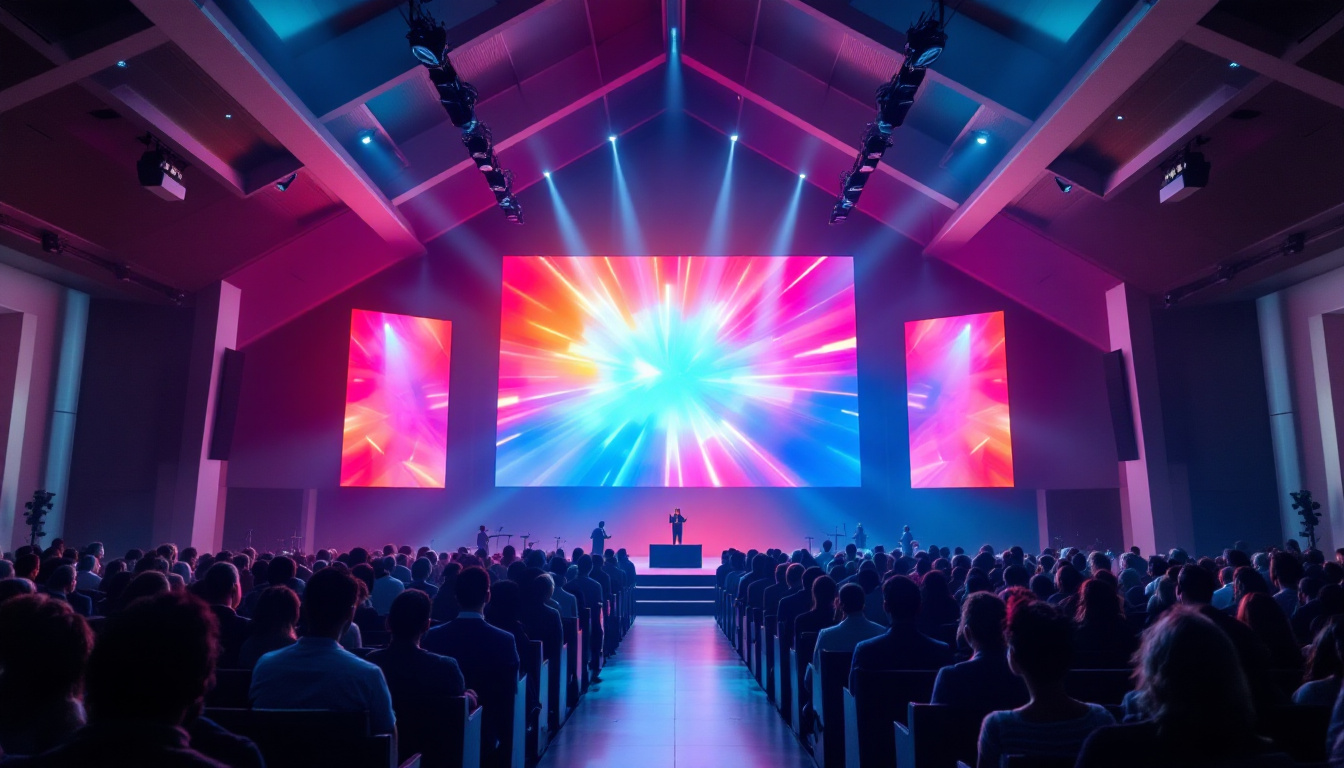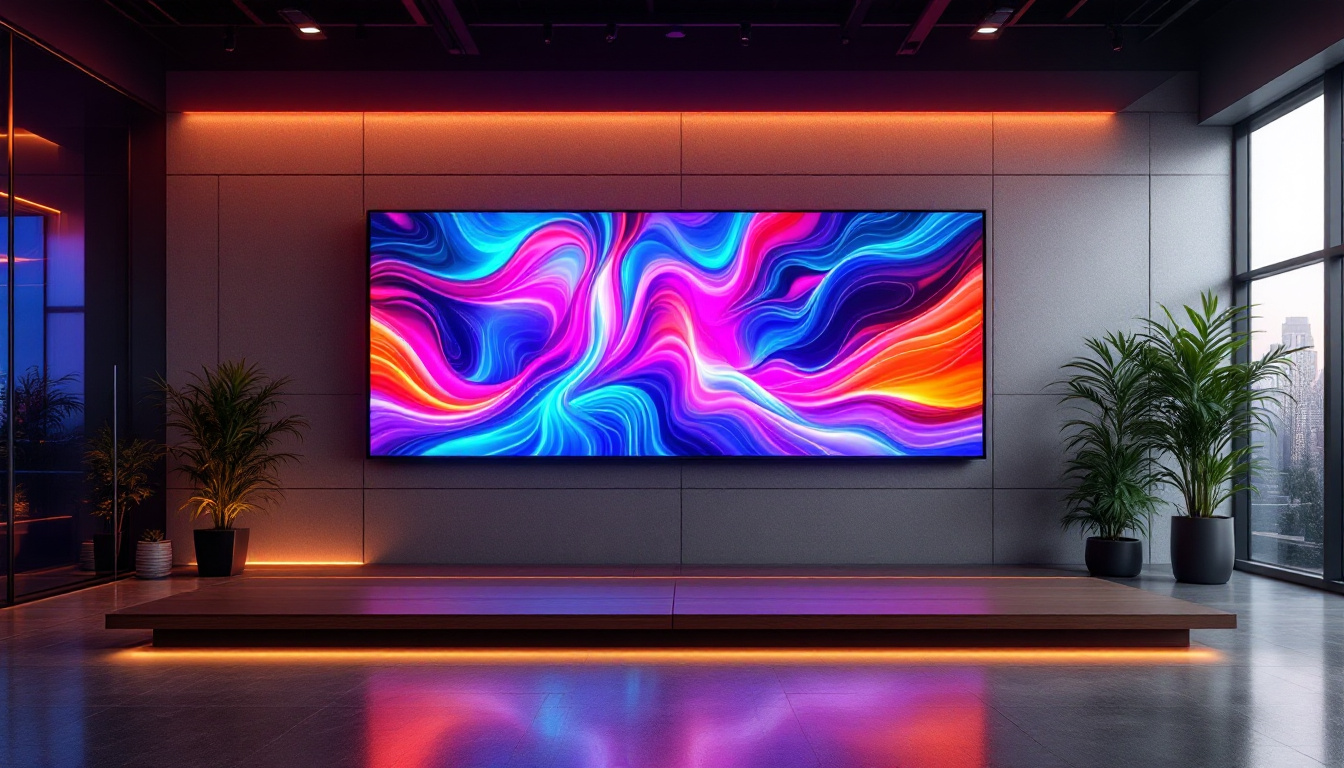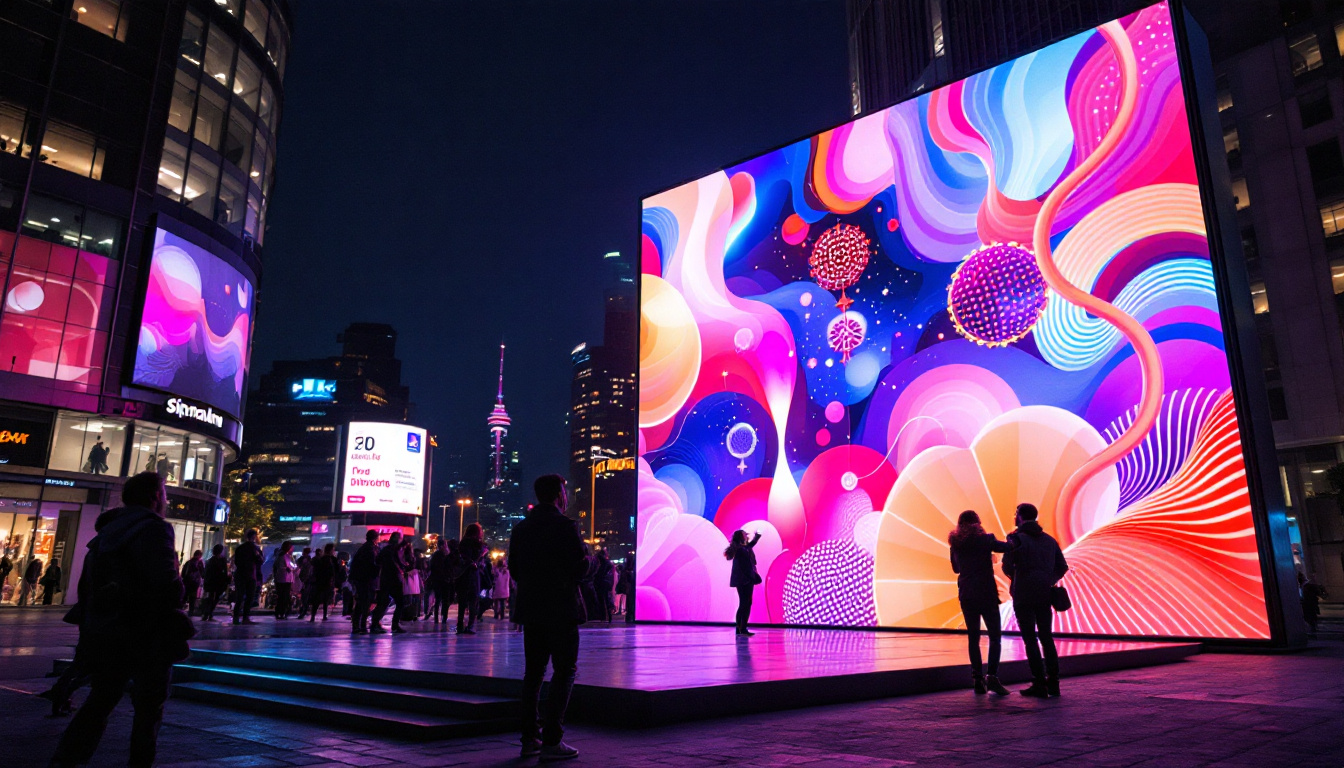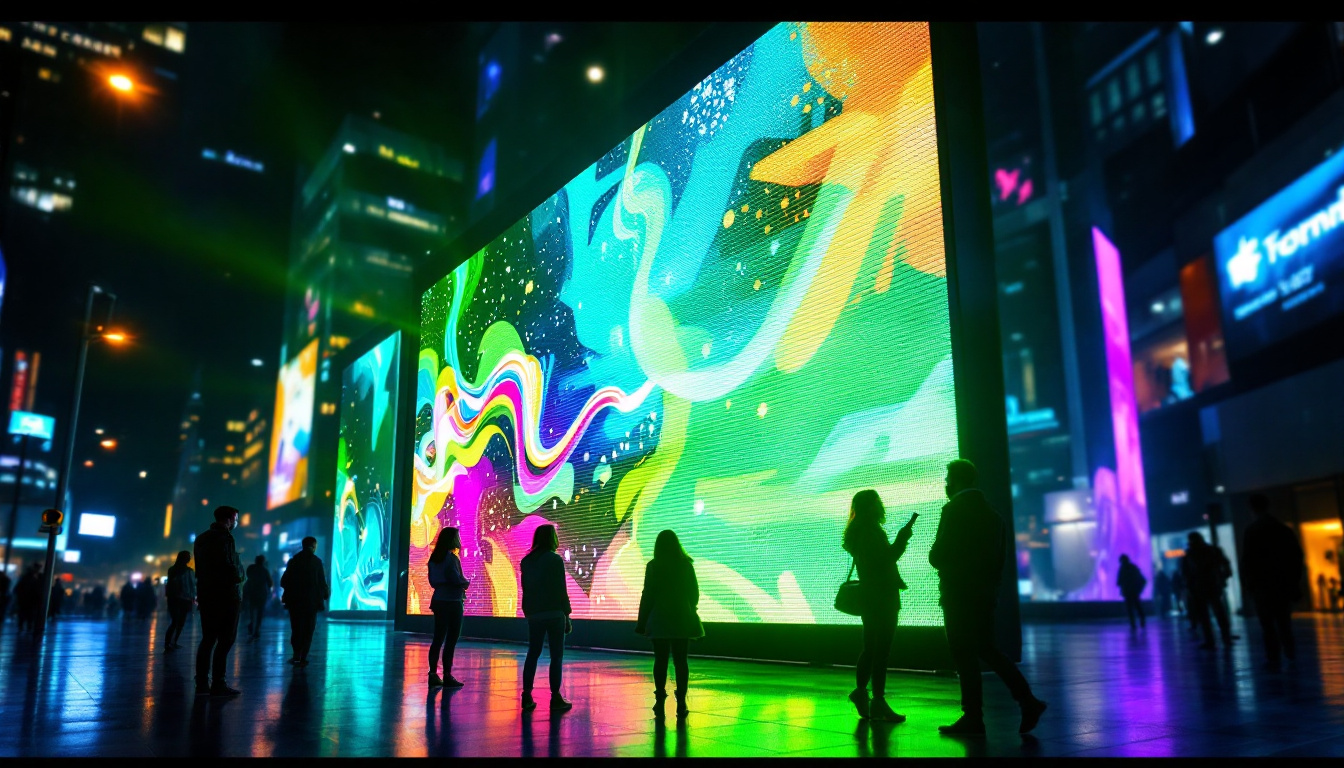In today’s digital age, churches are increasingly embracing technology to enhance their worship experience and engage their congregations. One of the most impactful innovations in church design is the use of LED displays. These vibrant screens not only serve practical purposes but also contribute to the overall aesthetic and atmosphere of a worship space. This article explores various aspects of LED displays in church design, including their benefits, design considerations, and implementation strategies.
The Benefits of LED Displays in Churches
LED displays offer a multitude of advantages that can transform the way a church communicates and engages with its members. From dynamic visuals to improved accessibility, the benefits are significant.
Enhanced Visual Communication
One of the primary benefits of LED displays is their ability to convey messages clearly and effectively. Whether it’s displaying song lyrics, sermon notes, or announcements, LED screens ensure that all congregants can see the information without straining their eyes. This is particularly important in larger spaces where traditional projection methods may fall short.
Moreover, the vibrant colors and high resolution of LED displays can capture attention and create a more engaging worship environment. This visual appeal can enhance the overall experience, making services more memorable and impactful. The ability to incorporate multimedia elements such as videos, animations, and live feeds can also help to create a more immersive atmosphere, encouraging deeper emotional connections among the congregation.
Flexibility and Versatility
LED displays are incredibly versatile, allowing for a range of applications within a church setting. They can be used for live streaming services, displaying multimedia presentations, or even showcasing artwork and graphics that complement the worship theme. This flexibility enables churches to adapt their visual content to suit different occasions, from regular services to special events.
Additionally, LED displays can be easily updated or changed, allowing churches to keep their content fresh and relevant. This adaptability is essential in a world where congregational needs and preferences evolve over time. For instance, during holiday seasons or community outreach events, churches can quickly modify their displays to reflect the themes and messages that resonate with their members, fostering a sense of unity and purpose.
Improved Accessibility
Inclusion is a fundamental principle in many churches, and LED displays can significantly enhance accessibility for all members. For individuals with hearing impairments, screens can display real-time captions or translations, ensuring that everyone can participate fully in the service.
Furthermore, LED displays can be strategically placed throughout the worship space, allowing for better visibility from various angles. This consideration ensures that all congregants, regardless of where they sit, can engage with the service effectively. Additionally, the use of LED technology can support various languages or dialects, catering to diverse congregations and fostering a more inclusive environment. By providing visual aids that accompany spoken messages, churches can bridge communication gaps and ensure that everyone feels welcomed and valued in their community.
Design Considerations for LED Displays
When incorporating LED displays into church design, several factors must be considered to ensure they enhance the worship experience rather than detract from it. Thoughtful planning and execution can make a significant difference in how these displays are perceived and utilized.
Screen Placement and Size
The placement and size of LED displays are critical to their effectiveness. Screens should be positioned where they can be easily seen by the entire congregation, without obstructing sightlines or disrupting the flow of the service. Common locations include the front of the sanctuary, side walls, or even in the back for larger spaces.
Additionally, the size of the screens should be proportional to the space. A display that is too small may not be effective in conveying messages, while one that is too large can overwhelm the aesthetic of the worship area. Consulting with a design professional can help determine the best options for each unique space.
Integration with Existing Architecture
LED displays should complement the existing architecture and design elements of the church rather than clash with them. This can be achieved by selecting screens that blend seamlessly with the overall aesthetic, whether that means choosing a sleek, modern design or a more traditional look.
Creative framing or mounting solutions can also enhance the integration of LED displays. For example, incorporating the screens into custom-built structures or using decorative elements can make them a focal point that enhances the worship environment.
Content Strategy
A well-defined content strategy is essential for maximizing the impact of LED displays. Churches should consider what types of content will be displayed and how often it will change. Regular updates can keep the congregation engaged and informed, while a consistent design theme can create a cohesive visual experience.
It’s also important to ensure that the content is accessible and relevant to the congregation. This may involve training staff or volunteers to create and manage content effectively, ensuring that it aligns with the church’s mission and values.
Implementation Strategies for LED Displays
Successfully integrating LED displays into a church requires careful planning and execution. From budgeting to installation, each step plays a crucial role in the overall success of the project.
Budgeting and Funding
Budgeting for LED displays involves more than just the initial purchase price. Churches should consider ongoing costs such as maintenance, content creation, and potential upgrades. Establishing a clear budget can help ensure that the project remains financially viable.
Many churches explore various funding options, including donations, grants, or fundraising events, to support the investment in technology. Engaging the congregation in the funding process can foster a sense of ownership and enthusiasm for the new displays.
Choosing the Right Technology
With numerous LED display options available, selecting the right technology is essential. Factors to consider include resolution, brightness, and durability. For instance, outdoor displays may require higher brightness levels to remain visible in sunlight, while indoor screens may prioritize resolution for detailed visuals.
Consulting with technology experts or vendors can provide valuable insights into the best options for a church’s specific needs. It’s also wise to consider future scalability, ensuring that the chosen technology can adapt as the church’s needs evolve.
Installation and Training
Once the decision has been made regarding the type and placement of LED displays, the installation process can begin. Hiring experienced professionals for installation is recommended to ensure that the screens are set up correctly and safely.
After installation, training staff and volunteers on how to operate the displays is crucial. Familiarity with the technology will empower the church to utilize the displays effectively, maximizing their potential to enhance the worship experience.
Case Studies: Successful LED Display Implementations
Examining successful implementations of LED displays in churches can provide valuable insights and inspiration for others considering similar projects. Here are a few notable examples.
Modern Mega-Churches
Many modern mega-churches have embraced LED technology to create immersive worship experiences. For instance, a well-known church in Texas has installed multiple large LED screens throughout its auditorium. These screens are used not only for displaying lyrics and announcements but also for live streaming and showcasing artistic visuals that enhance the sermon themes.
The integration of LED displays has transformed the worship environment, making it more dynamic and engaging for attendees. The church reports increased participation and enthusiasm during services, attributing much of this to the enhanced visual experience.
Smaller Community Churches
Even smaller community churches are finding innovative ways to incorporate LED displays. A church in a rural area recently installed a modest-sized LED screen at the front of its sanctuary. This screen is used primarily for displaying song lyrics and sermon notes, making it easier for congregants to follow along.
The feedback from the congregation has been overwhelmingly positive, with many expressing appreciation for the improved accessibility and engagement during services. This example demonstrates that even smaller churches can benefit from LED technology, creating a more inclusive worship experience.
Future Trends in Church LED Displays
As technology continues to evolve, so do the possibilities for LED displays in church design. Keeping an eye on emerging trends can help churches stay ahead of the curve and enhance their worship experiences.
Interactive Displays
One exciting trend is the rise of interactive LED displays. These screens allow congregants to engage with content in real time, whether through touch interfaces or mobile app integration. This level of interactivity can foster deeper engagement and participation during services.
For example, churches might use interactive displays for live polls during sermons, allowing congregants to share their thoughts and opinions instantly. This engagement can create a more dynamic and participatory worship experience.
Integration with Augmented Reality
Augmented reality (AR) is another emerging trend that has the potential to revolutionize church experiences. By integrating AR with LED displays, churches can create immersive environments that blend physical and digital elements. This could include interactive storytelling, virtual tours of biblical locations, or even enhanced visualizations of sermon themes.
As AR technology becomes more accessible, churches may find innovative ways to incorporate it into their worship services, making the experience more engaging and impactful for congregants.
Conclusion
Incorporating LED displays into church design offers numerous benefits, from enhanced visual communication to improved accessibility. By considering design elements, implementation strategies, and future trends, churches can create engaging and dynamic worship environments that resonate with their congregations.
As technology continues to evolve, the potential for LED displays in churches will only grow. Embracing these innovations can help churches stay relevant and connected to their communities, fostering a vibrant and inclusive worship experience for all.
Illuminate Your Worship Space with LumenMatrix
Ready to elevate your church’s worship experience with the latest in LED display technology? Discover the transformative power of LumenMatrix’s innovative solutions, from vibrant Indoor LED Walls to captivating Outdoor LED Displays and beyond. Embrace the future of visual communication and create a truly immersive environment for your congregation. Check out LumenMatrix LED Display Solutions today and witness how our cutting-edge technology can enhance your church’s engagement and message delivery.































